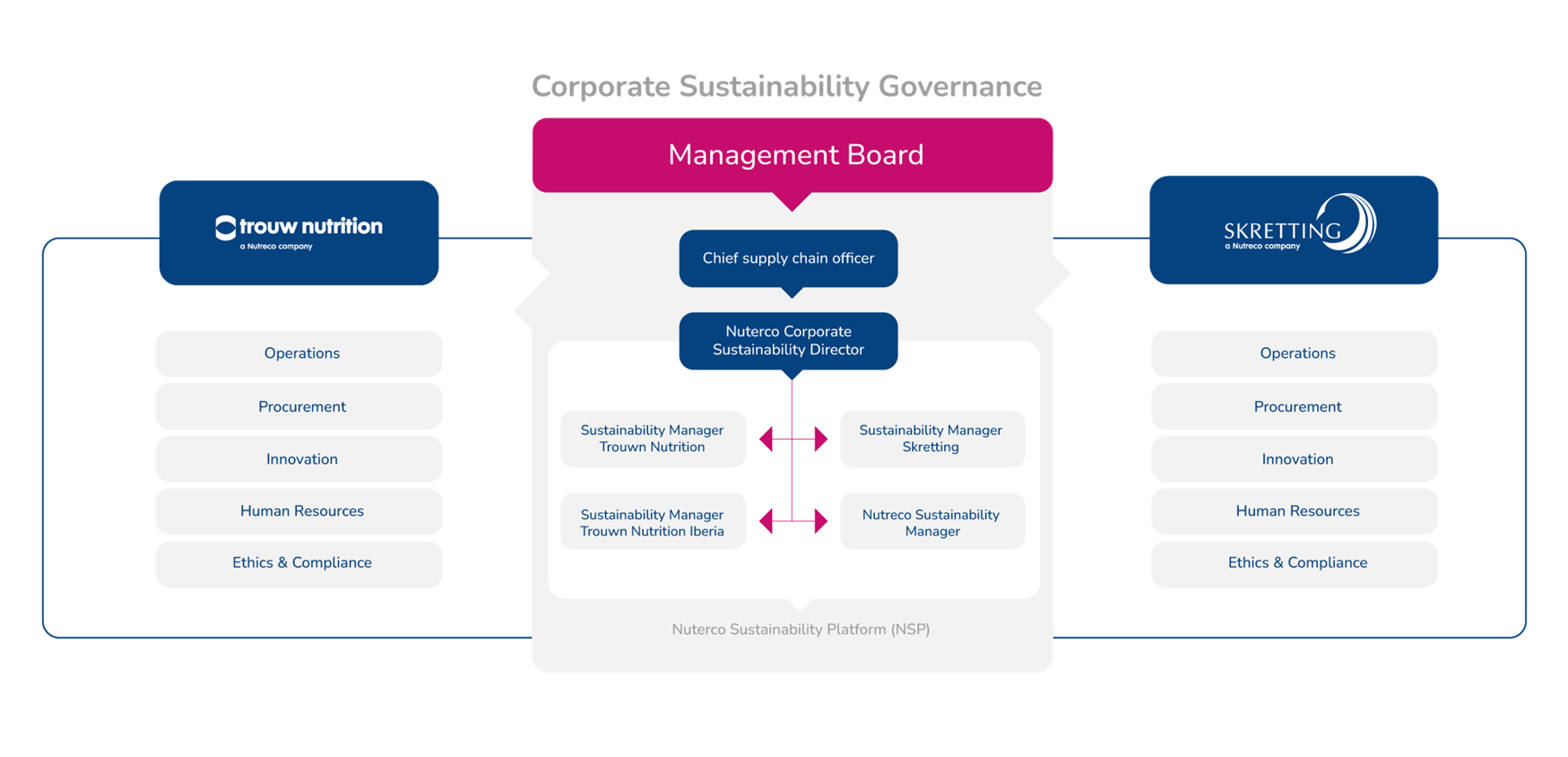Priority 1
- Climate change mitigation
- Occupational health and safety
Nutreco’s Sustainability function is led by our Chief Supply Chain Officer who sits as a member of our Management Board. The Corporate Sustainability Director reports to the Chief Supply Chain Officer and chairs the Nutreco Sustainability Platform (NSP).
The NSP is where the sustainability aspects of our strategy are developed, and where sustainability issues are addressed. It is made up of five individuals, three of whom represent the businesses. Our business line Sustainability Directors in Trouw Nutrition and Skretting are responsible for implementing sustainability activities aimed at achieving our RoadMap 2025 targets, working with teams in our businesses throughout the world.


In Nutreco and Skretting we recognise that long-term success is built on responsible practices, and the need for innovation and improved ways of working is growing every day. Our leaders are personally invested in ensuring that sustainability continues to shape the way solutions are developed and delivered to customers, contributing to a resilient and responsible future for the aquaculture industry.
Producing sustainable feed solutions is only possible with sufficient resource allocation at all parts of our organisation. Therefore, since 2024 the Skretting global sustainability team grew from one person to four, with the Skretting Sustainability Director being part of the Skretting Management Team. This ensures that we are well positioned to support our business units and customers on their respective sustainability journeys. In addition, the business units are getting increasingly better equipped to operationalise sustainability by attracting and enabling talent to meet, and overachieve on, customer expectations.
We developed our first Double Materiality Assessment in 2023 and have continued refining it every year since, providing an up-to-date assessment of the ESG impacts, risks and opportunities relevant to our business. The topics found through this process are our most material topics and therefore our number one priority, but we do also identify other actual and potential material topics across our operations and value chain.

We aim to enhance transparency, sharpen our sustainability focus and drive meaningful impact across our business. That is why grounding the DMA in stakeholder input has been so important to us. The process took the views of suppliers, customers, employees and public organisations into consideration.
The questionnaire was sent to a total of 700 stakeholders, with a total of 293 responses. Of these, 35% came from internal stakeholders and 65% from external.